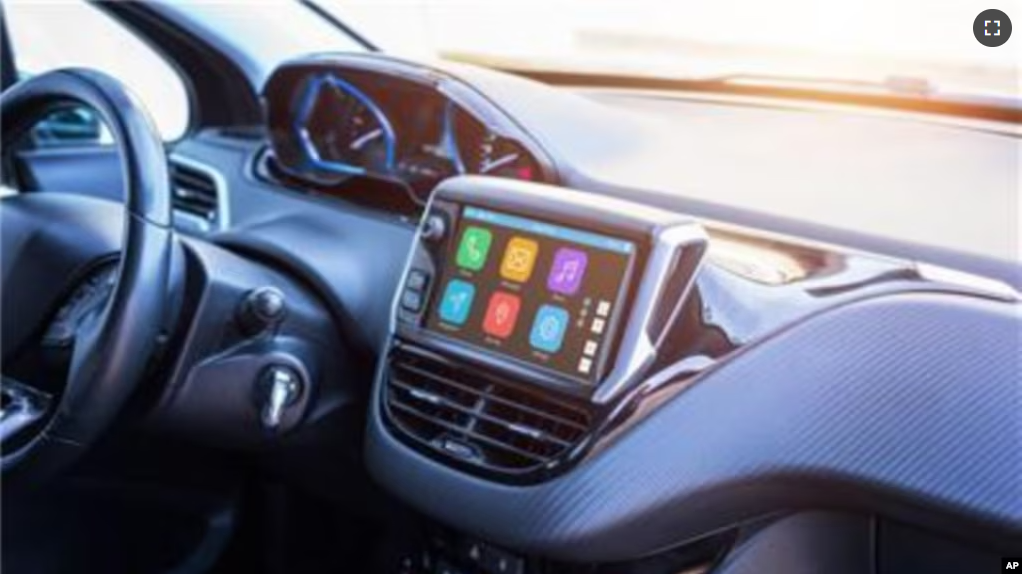The move by automobile manufacturers to include radios in cars nearly 100 years ago helped spread AM radio across the United States.
But now, some carmakers want to stop providing AM radio in their new vehicles.
The first cars to be sold with radios were introduced in the 1930s. They only received one kind of radio transmission, those that broadcast using AM, or amplitude modulation.
After some time, radios could receive transmissions in AM and FM. FM stands for frequency modulation.
For many years, those were the only choices. But after a while, car makers added 8-track players, audio cassette players, compact disc players and eventually Bluetooth connections so people could play music from mobile devices such as an iPhone.
However, cars are no longer sold with 8-track players or compact disc players. And now, some new electric cars are being sold with radios that only receive FM signals. Car makers say the driving systems in electric vehicles interfere with the AM signal.
That concerns the people who own and work at about 4,000 radio stations in the U.S. that broadcast in AM. One of them is in the small town of Dimmitt, Texas. Nancy and Todd Whalen own the radio station KDHN-1470, which has been broadcasting since 1963. They are the only employees, and they talk on the radio every morning. The Whalens have run the station for eight years.
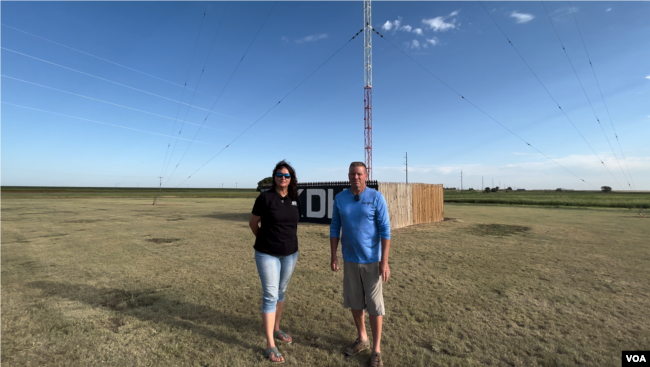
They say they do it, so Dimmitt has something to feel good about. “We feel like what we’ve done and continue to do is provide that, not just for Dimmitt, but for all the small towns in the area that no longer have local radio stations.”
KDHN also runs a translator, or a system that changes the signal so their programs can also be heard on FM. But the AM signal is much stronger. The FM signal covers about a 30-kilometer radius from the transmitter while the AM signal covers 160 kilometers.
Nancy Whalen called the AM signal “our bread and butter since the beginning.”
The reduction in the number of AM stations has many people worried. That includes broadcasters, business owners, farmers and lawmakers. Some broadcasting companies that own AM radio stations are selling their land because it is more profitable than running a radio station.
Amy Klobuchar is a senator from Minnesota. She is concerned about losing AM radio stations. They keep people in her large state informed.
In an online video, Klobuchar said AM radio “gives people the information they need in many of our rural areas…” She noted that “a lot of people drive long distances” in rural areas and listen to the radio in the car. She also said of AM radio: “This is where people find their local news.”
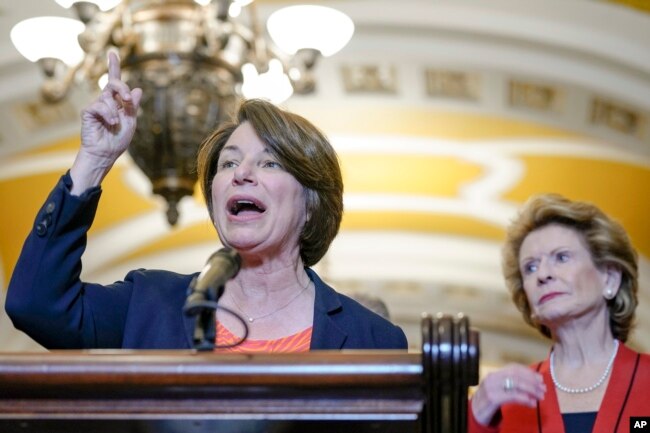
Klobuchar and others are working on the “AM For Every Vehicle Act.”
They want to keep AM radio in cars. The lawmakers say the car makers should find a way to keep AM radio.
When Klobuchar talks about people in rural areas, she is talking about people like Rodney Hunter. He supervises two grain storage structures, called silos, in Texas. He said farmers will listen to the radio on their way to sell grain. Without the news on AM radio, they would not know if grain prices were up or down.
“Farmers are in their (trucks or tractors) going up and down the road,” Hunter said. He added it is easier for them to listen to the agriculture news on AM radio than to try to find the information online.
But the people who run AM radio stations are not just farmers and small-town business people with a sense of civic pride.
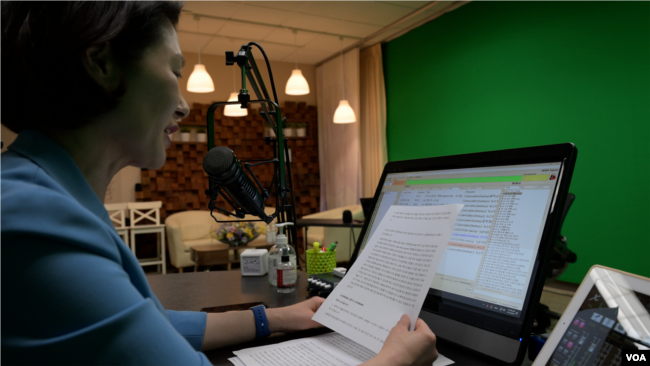
About five hours southeast of the grain-storage building, Joann Whang is a pharmacist who listens to KKDA-730 in Dallas, Texas. It is a Korean-language station. At first, Whang said she thought listening to a Korean station was only for old people.
“But it actually was pretty interesting,” she said. She said she got a lot of information and even heard Korean pop songs, known as K-pop.
The station is owned by DK Media Group. The company also runs two Korean-language newspapers. Stephanie Min Kim is the president. She said removing AM from cars would hurt small companies like hers that broadcast in languages other than English. It is too costly to buy a license, or government permission, to broadcast in FM, she said.
Kim once worked for the Korean broadcaster KBS. She said, “We feel that it is our duty to help and support our Korean immigrants integrate into American society.” She said her radio station hosts discussions with experts in law, healthcare and education that help people from Korea learn about life in the U.S.
She said, if AM is removed from cars, the transmissions face an “existential threat.” That means the existence of the stations is threatened.
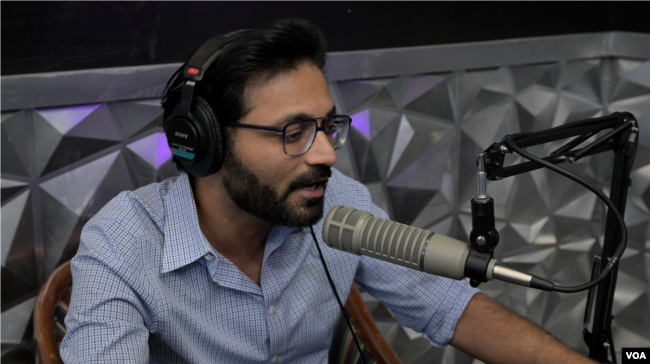
Radio Caravan is another small broadcaster in Dallas. It broadcasts in Hindi, Tamil and English on AM 700. Aparna Ragnan is a radio host. She said carmakers should find a way to keep AM.
Vaibhav Sheth is the station manager. He said the sound quality of the AM stations is not a problem. He said the information that the stations provide is more important than sound quality. In addition, he notes that AM stations are important in emergencies. The emergency signals go off to alert listeners about bad weather, like a tornado, or a child who is in danger.
“Whatever it is that’s happening,” he said, “it goes to the AM frequency.”
I’m Steve Herman. And I’m Dan Friedell.
Steve Herman wrote this story for voanews.com. Dan Friedell adapted it for Learning English.
______________________________________________
Words in This Story
transmission –n. (broadcasting) the sending of a specific radio signal for broadcast
8-track, cassette, compact disc –n. different kinds of devices that store information to play back sound
rural –adj. in the countryside and not in the city or suburbs
bread and butter –adj. (idiomatic) very basic and necessary
pharmacist –n. a person whose job it is to prepare and provide drugs and medicines called for by a medical doctor’s orders
integrate –v. to make a person part of a large group, organization or community
frequency –n. (broadcasting) a measure of a radio wave signal that is received by a radio
